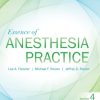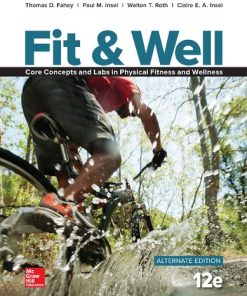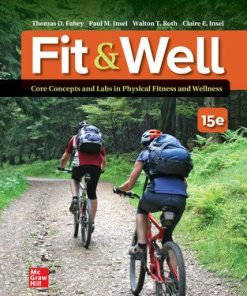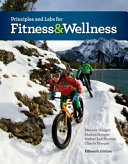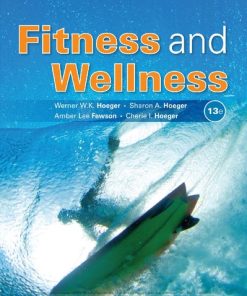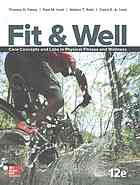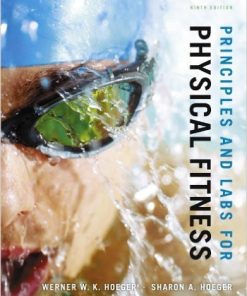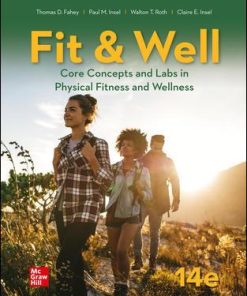Principles and Labs for Fitness and Wellness 1st edition by Werner Hoeger 133709997X 9798214351278
$50.00 Original price was: $50.00.$25.00Current price is: $25.00.
Principles and Labs for Fitness and Wellness 1st edition by Werner W.K. Hoeger – Ebook PDF Instant Download/DeliveryISBN: 133709997X, 9798214351278
Full download Principles and Labs for Fitness and Wellness 1st edition after payment.
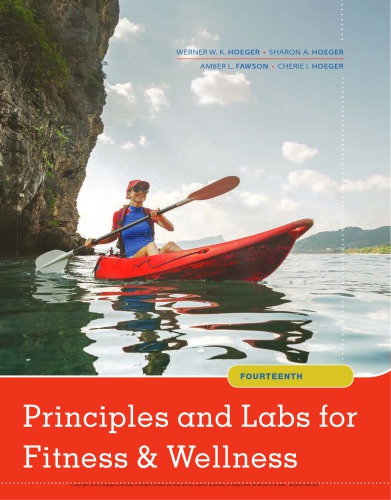
Product details:
ISBN-10 : 133709997X
ISBN-13 : 9798214351278
Author : Werner W.K. Hoeger
Exercise, eat right, and thrive! Emphasizing the importance of a fitness and wellness lifestyle, PRINCIPLES AND LABS FOR FITNESS AND WELLNESS, 14th Edition, challenges you to meet your personal fitness and wellness goals, and shows you how to inspire others to do the same. This includes behavior modification techniques through sensible approaches and a strong focus on the practical ways you can incorporate changes into in your daily life. By the end of the course, you will feel proficient in creating an exercise program suited to your values, making nutrition choices, crafting an active lifestyle, and overcoming barriers to personal change.
Principles and Labs for Fitness and Wellness 1st Table of contents:
Chapter 1. Physical Fitness and Wellness
1.1. Life Expectancy
1.2. Leading Health Problems in the United States
Diseases of the Cardiovascular System
Cancer
Chronic Lower Respiratory Disease
Accidents
1.3. Lifestyle as a Health Problem
1.4. The Dose-Response Relationship between Physical Activity and Health
Exercise Is Medicine
1.5. Additional Benefits of a Comprehensive Fitness Program
Health Benefits
Exercise and Brain Function
1.6. Sitting Disease: A 21st-Century Chronic Disease
1.7. Physical Activity and Exercise Defined
1.8. Types of Physical Fitness
1.9. Fitness Standards: Health versus Physical Fitness
Health Fitness Standards
Physical Fitness Standards
Which Program Is Best?
1.10. Federal Guidelines for Physical Activity
1.11. Monitoring Daily Physical Activity
Pedometers and Activity Trackers
Recommended Steps per Day
1.12. Economic Benefits of Physical Activity
1.13. Wellness
The Seven Dimensions of Wellness
1.14. The Wellness Challenge for Our Day
1.15. Wellness Education: Using This Book
A Personalized Approach
Exercise Safety
1.16. Assessment of Resting Heart Rate and Blood Pressure
Mean Blood Pressure
Assess Your Behavior
Assess Your Knowledge
Lab 1A: Daily Physical Activity Log
Lab 1B: Wellness Lifestyle Questionnaire
Lab 1C: PAR-Q and Health History Questionnaire
Lab 1D: Resting Heart Rate and Blood Pressure
Suggested Readings
Chapter 2. Behavior Modification
2.1. Living in a Toxic Health and Fitness Environment
Environmental Influence on Physical Activity
Environmental Influence on Diet and Nutrition
2.2. Keys to Changing Behavior
2.3. Personal Values and Behavior
2.4. Your Brain and Your Habits
Changing Habits through Mindfulness and Repetition
Changing Habits by Focusing on Long-Term Values
2.5. Planning and Willpower
Implementation Intentions
2.6. Barriers to Change
2.7. Self-Efficacy
Sources of Self-Efficacy
2.8. Motivation and Locus of Control
2.9. Behavior Change Theories
Learning Theories
2.10. The Transtheoretical Model of Change
Relapse
2.11. The Process of Change
Consciousness-Raising
2.12. Goal Setting and Evaluation
SMART Goals
Goal Evaluation
Assess Your Behavior
Assess Your Knowledge
Lab 2A: Exercising Control over Your Physical Activity and Nutrition Environment
Lab 2B: Behavior Modication Plan
Lab 2C: Setting SMART Goals
Suggested Readings
Chapter 3. Nutrition for Wellness
3.1. Nutrients
3.2. Carbohydrates
Simple Carbohydrates
Complex Carbohydrates
Fiber
Types of Fiber
Computing Daily Carbohydrate Requirement
3.3. Fats (Lipids)
Simple Fats
Compound Fats
Derived Fats
3.4. Proteins
3.5. Vitamins
3.6. Minerals
3.7. Water
3.8. A Healthy Diet
3.9. Nutrition Standards
Dietary Reference Intakes
3.10. Nutrient Analysis
3.11. Achieving a Balanced Diet
3.12. Choosing Healthy Foods
3.13. Vegetarianism
Nutrient Concerns
3.14. Nuts
3.15. Soy Products
3.16. Probiotics
3.17. Advanced Glycation End Products
3.18. Diets From Other Cultures
Mediterranean Diet
Ethnic Diets
3.19. Nutrient Supplementation
Antioxidants
Multivitamins
Vitamin D
Folate
3.20. Benefits of Foods
3.21. Functional Foods
3.22. Organic Foods
3.23. Genetically Modified Crops
3.24. Energy Substrates for Physical Activity
Energy (ATP) Production
3.25. Nutrition for Athletes
Carbohydrate Loading
Strenuous Exercise and Strength Training
Hyponatremia
Creatine Supplementation
3.26. Bone Health and Osteoporosis
3.27. Iron Deficiency
3.28. 2015–2020 Dietary Guidelines for Americans
Key Recommendations
Physical Activity Recommendation
3.29. Proper Nutrition: A Lifetime Prescription for Healthy Living
Assess Your Behavior
Assess Your Knowledge
Lab 3A: Nutrient Analysis
Lab 3B: MyPlate Record Form
Suggested Readings
Chapter 4. Body Composition
4.1. What Is Body Composition?
Essential and Storage Fat
4.2. Why Does Body Composition Matter?
Body Composition and Weight Loss
Avoiding Creeping Changes in Body Composition
4.3. Body Shape and Health Risk
4.4. Techniques to Assess Body Composition
Dual Energy X-ray Absorptiometry
Hydrostatic Weighing
Air Displacement
Skinfold Thickness
Girth Measurements
Bioelectrical Impedance
4.5. Metrics Used to Assess Body Size and Shape
Body Mass Index
Waist Circumference
Waist-to-Height Ratio: “Keep Your Waist Circumference to less Than Half Your Height.”
Obtaining an Accurate Waist Measurement
4.6. Determining Recommended Body Weight
Begin with Your Current Body Composition
Calculate Your Recommended Body Weight
4.7. Importance of Regularly Assessing Body Composition
Assess Your Behavior
Assess Your Knowledge
Lab 4A: Hydrostatic Weighing for Body Compostion Assessment
Lab 4B: Body Composition, Disease Risk Assessment, and Recommended Body Weight Determination
Chapter 5. Weight Management
5.1. Weight Management in the Modern Environment
The Wellness Way to Lifetime Weight Management
5.2. Overweight versus Obese
Body Weight Affects Wellness
5.3. Tolerable Weight
Body Image and Acceptance
5.4. The Weight Loss Dilemma
Health Consequences of Dieting
Diet Crazes
Low-Carb Diets
Exercise-Related Weight Loss Myths
Adopting Permanent Change
5.5. Mental and Emotional Aspects of Weight Management
Willpower versus Planning
Mindful Eating versus Distracted Eating
Avoiding Perfectionism
Feelings of Satisfaction versus Deprivation
Eating and the Social Environment
Overcoming Emotional Eating
5.6. Physiology of Weight Loss
Energy-Balancing Equation
Setpoint Theory
Maintaining Metabolism and Lean Body Mass
Rate of Weight Loss in Men versus Women
Protein, Fats, Fiber, and Feeling Satisfied
5.7. Losing Weight the Sound and Sensible Way
Estimating Your Daily Energy Requirement
Adjusting Your Fat Intake
Reducing Evening Eating
The Importance of Breakfast
Drink Water and Avoid Liquid Calories
Reducing Your Eating Occasions
Foods that Aid in Weight Loss
Monitoring Your Diet with Daily Food Logs
5.8. Nondietary Factors that Affect Weight Management
Sleep and Weight Management
Light Exposure and BMI
Monitoring Body Weight
5.9. Physical Activity and Weight Management
Physical Activity and Energy Balance
Physical Activity Predicts Success at Weight Management
Amount of Physical Activity Needed for Weight Loss
Exercise and Body Composition Changes
Overweight and Fit Debate
5.10. Types of Exercise Recommended
Strength-Training Increases Lean Body Mass
The Roles of Exercise Intensity and Duration in Weight Management
5.11. Healthy Weight Gain
5.12. Behavior Modification and Adherence to a Weight Management Program
The Simple Truth
Assess Your Behavior
Assess Your Knowledge
Lab 5A: Computing Your Dally Caloric Requirement
Lab 5B: Weight-Loss Behavior Modification Plan
Lab 5C: Calorie-Restricted Diet Plans
Lab 5D: Healthy Plan for Weight Maintenance or Gain
Lab 5E: Weight Management: Measuring Progress
Suggested Readings
Chapter 6. Cardiorespiratory Endurance
6.1. Basic Cardiorespiratory Physiology: A Quick Survey
6.2. Aerobic and Anaerobic Exercise
Benefits of Aerobic Exercise
6.3. Assessing Physical Fitness
Responders versus Nonresponders
6.4. Assessing Cardiorespiratory Endurance
Components of VO 2
Tests to Estimate VO 2 max
Interpreting the Results of Your VO 2 max
Predicting VO 2 and Caloric Expenditure from Walking and Jogging
6.5. Ready to Start an Exercise Program?
6.6. Guidelines for Developing Cardiorespiratory Endurance
Intensity
Type (Mode)
Time (Duration)
Frequency
“Physical Stillness:” A Deadly Proposition
Volume
Progression Rate
Rating the Fitness Benefits of Aerobic Activities
6.7. Getting Started and Adhering to a Lifetime Exercise Program
A Lifetime Commitment to Fitness
Assess Your Behavior
Assess Your Knowledge
Lab 6A. Cardiorespiratory Endurance Assessment
Lab 6B. Caloric Expenditure and Exercise Heart Rate
Lab 6C. Exercise Readiness Questionnaire
Lab 6D. Cardiorespiratory Exercise Prescription
Suggested Readings
Chapter 7. Muscular Fitness: Strength and Endurance
7.1. Benefits of Strength-Training
Improves Functional Capacity
Improves Overall Health
Increases Muscle Mass and Resting Metabolism
Improves Body Composition
Helps Control Blood Sugar
Enhances Quality of Life as You Age
7.2. Gender Differences
7.3. Assessing Muscular Strength and Endurance
Muscular Strength: Hand Grip Strength Test
Muscular Endurance Test
Muscular Strength and Endurance Test
Basic Muscle Physiology
Types of Muscle Hypertrophy
7.4. Factors that Affect Muscular Fitness
Neural Function
Types of Muscle Fiber
Overload
Specificity of Training
Training Volume
Periodization
7.5. Guidelines for Strength-training
Type (Mode) of Training
Intensity (Resistance)
Time (Sets)
Frequency
Results in Strength Gain
7.6. Dietary Guidelines for Muscular and Strength Development
7.7. Strength-Training Exercises
Exercise Variations
Plyometric Exercise
Core Strength-training
Stability Exercise Balls
Elastic-Band Resistive Exercise
7.8. Exercise Safety Guidelines
7.9. Setting up Your Own Strength-Training Program
Assess Your Behavior
Assess Your Knowledge
Lab 7A: Muscular Strength and Endurance Assessment
Lab 7B: Strength-Training Program
Strength-Training Exercises without Weights
Strength-Training Exercises with Weights
Stability Ball Exercises
Suggested Readings
Chapter 8. Muscular Flexibility
8.1. Benefits of Good Flexibility
8.2. Factors that Affect Flexibility
Joint Structure
Adipose Tissue
Muscular Elasticity and Genetics
Body Temperature
Age
Gender
Level of Physical Activity
8.3. Assessing Flexibility
Interpreting Flexibility Test Results
Guidelines for Developing Muscular Flexibility
Types of Stretching Exercises
Physiological Response to Stretching
Intensity
Time/Repetitions
Frequency
When to Stretch?
8.5. Flexibility Exercises
Contraindicated Exercises?
8.6. Preventing and Rehabilitating Low Back Pain
Causes of Low Back Pain
Evaluating Body Posture?
Effects of Stress
When to Call a Physician
Treatment Options
Personal Flexibility and Low Back Conditioning Program
Assess Your Behavior
Assess Your Knowledge
Lab 8A: Muscular Flexibility Assessment
Lab 8B: Posture Evaluation
Lab 8C: Flexibility Development and Low Back Conditioning
Suggested Readings
Chapter 9. Fitness Programming and Skill Fitness
9.1. Choosing an Exercise Program with Your Values in Mind
Being Flexible with Your Exercise Routine
9.2. Exercise Prescription for Health and Fitness
Basic Exercise Training Principles
Interval Training
High-Intensity Interval Training
Ultra-Short Workouts
Cross-Training
Overtraining
Periodization
9.3. Skill-Related Fitness
The Six Components of Skill-Related Fitness
Team Sports
Performance Tests for Skill-Related Fitness
9.4. Exercise Programming for Sport or Event Participation
Sport-Specific Training
Preparing for Sports Participation
9.5. General Exercise Considerations
Time of Day for Exercise
Exercise in Heat and Humidity
Exercise in Cold Weather
Exercising with the Cold or Flu
9.6. Nutrition and Hydration during Exercise
Fluid Replacement during Exercise
Meal Timing during Exercise
9.7. Exercise-Related Injuries
Muscle Soreness and Stiffness
Exercise Intolerance
Side Stitch
Shin Splints
Muscle Cramps
Acute Sports Injuries
9.8. Tailoring Exercise to Health Circumstances
Asthma and Exercise
Arthritis and Exercise
Diabetes and Exercise
Smoking and Exercise
9.9. Women’s Health and Exercise
Menstruation and Exercise
The Female Athlete Triad
Exercise and Dysmenorrhea
Exercise during Pregnancy
9.10. Exercise and Aging
Benefits of Lifelong Exercise
Exercise Training for Seniors
Body Composition in Seniors
Exercise and Mental Health in Seniors
Exercise Recommendations for Seniors
9.11. You Can Get It Done
Assess Your Behavior
Assess Your Knowledge
Lab 9A: Personal Reflection on Exercise and Exercise Enjoyment
Lab 9B: Assessment of Skill Fitness
Lab 9C: Personal Fitness Plan
Suggested Readings
Chapter 10. Stress Assessment and Management Techniques
10.1. The Mind–Body Connection
The Brain
The Immune System
10.2. Stress
Eustress and Distress
Chronic Distress Leads to Illness
10.3. How the Body Adapts to Stress
Alarm Reaction
Resistance
Exhaustion and Recovery
10.4. Sources of Stress
10.5. How Perception and Attitude Affect Health
Self-Esteem
Fighting Spirit
10.6. How Behavior Patterns Affect Health
10.7. Vulnerability to Stress
10.8. Sleep Management
How Much Sleep Do I Need?
What Happens If I Don’t Get Enough Sleep?
College Students Are Among the Most Sleep-Deprived
Does It Help to “Catch up” on Sleep on Weekends?
10.9. Time Management
Five Steps to Time Management
Time-Management Skills
10.10. Managing Technostress
10.11. How the Body Responds to Stress
10.12. Coping with Stress
Physical Activity
Relaxation Techniques
Meditation
10.13. Which Technique Is Best?
Assess Your Behavior
Assess Your Knowledge
Lab 10A: Stress Events Scale
Lab 10B: Type A Personality and Hostility Assessment
Lab 10C: Stress Vulnerability Questionnaire
Lab 10D: Goals and Time Management Skills
Lab 10E: Stress Management
Suggested Readings
Chapter 11. Preventing Cardiovascular Disease
11.1. Cardiovascular Disease
11.2. Most Prevalent Forms of Cardiovascular Disease
11.3. Stroke
11.4. Coronary Heart Disease
Coronary Heart Disease Risk Profile
11.5. Leading Risk Factors for Coronary Heart Disease
Physical Inactivity
Abnormal Electrocardiograms
Abnormal Cholesterol Profile
Elevated Triglycerides
Elevated Homocysteine
Inflammation
Diabetes
Hypertension (High Blood Pressure)
Excessive Body Fat
Tobacco Use
Tension and Stress
Personal and Family History
Age
11.6. Cardiovascular Risk Reduction
Assess Your Behavior
Assess Your Knowledge
Lab 11A: Self-Assessment Coronary Heart Disease Risk Factor Analysis
Suggested Readings
Chapter 12. Cancer Prevention
12.1. How Cancer Starts
DNA Mutations
Tumor Formation
Metastasis
12.2. Genetic versus Environmental Risk
12.3. Incidence of Cancer
12.4. Guidelines for Preventing Cancer
Ten Recommendations for a Cancer Prevention Lifestyle
How Can I Know Which Substances Cause Cancer?
12.5. Dietary Changes
Vegetables
Vitamin D
Phytonutrients
Fiber
Antioxidants
Tea
Spices
Sugar
Dietary Fat
Processed Meat and Protein
Soy
Alcohol Consumption
Nutrient Supplements
12.6. Excessive Body Weight
12.7. Abstaining from Tobacco
12.8. Avoiding Excessive Exposure to Sun
12.9. Monitoring Estrogen, Radiation Exposure, and Potential Occupational Hazards
12.10. Physical Activity
12.11. Other Factors
12.12. Early Detection
12.13. Warning Signals of Cancer
12.14. Cancer: Assessing Your Risks
Risk Factors for Common Sites of Cancer
12.15. What Can You Do?
Assess Your Behavior
Assess Your Knowledge
Lab 12A: Cancer Prevention Guidelines
Lab 12B: Early Signs of Illness
Lab 12C: Cancer Risk Profile
Chapter 13. Addictive Behavior
13.1. Addiction
13.2. How Addiction Develops
13.3. Drugs and Dependence
Caffeine
Nonmedical use of Prescription Drugs
Inhalant Abuse
Marijuana
Cocaine
Methamphetamine
MDMA (Ecstasy)
Heroin
New Psychoactive Substances
Synthetic Cannabinoids (Fake Pot or Spice)?
13.4. Alcohol
Effects on the Body
Addictive and Social Consequences of Alcohol Abuse?
Alcohol on Campus?
How to Cut Down on Drinking?
13.5. Treatment of Addictions
13.6. Tobacco
Types of Tobacco Products
Effects on the Cardiovascular System?
Smoking and Cancer
Effects of Secondhand Smoke
Health Care Costs of Smoking
Morbidity and Mortality?
Trends
13.7. Why People Smoke
Smoking Addiction and Dependency
Why Do You Smoke? Test
Smoking Cessation
Do You Want to Quit? Test
Breaking the Habit
Quitting Cold Turkey
Cutting Down Gradually
Nicotine-Substitution Products
Life after Cigarettes
Assess Your Behavior
Assess Your Knowledge
Lab 13A: Addictive Behavior Questionnaires
Lab 13B: Smoking Cessation Questionnaires
Suggested Readings
Chapter 14. Preventing Sexually Transmitted Infections
14.1. Types and Causes of Sexually Transmitted Infections
14.2. Four Most Common Bacterial STIs
Chlamydia
Gonorrhea
Syphilis
Trichomoniasis
14.3. Four Most Common Viral STIs
Human Papillomavirus (HPV) and Genital Warts
Genital Herpes
Hepatitis
HIV and AIDS
14.4. Preventing Sexually Transmitted Infections
Wise Dating
Monogamous Sexual Relationship
Assess Your Behavior
Assess Your Knowledge
Lab 14A: Self-Quiz on HIV and AIDS
Suggested Readings
Chapter 15. Lifetime Fitness and Wellness
15.1. Life Expectancy and Physiological Age
15.2. Conventional Western Medicine
Finding a Physician
Searching for a Hospital
15.3. Complementary and Alternative Medicine
Types of CAM Practices
Costs for CAM
CAM Shortcomings
Finding a CAM Practitioner
15.4. Integrative Medicine
15.5. Quackery and Fraud
15.6. Looking at Your Fitness Future
Health and Fitness Club Memberships
Personal Trainers
Purchasing Exercise Equipment
15.7. Self-Evaluation and Behavioral Goals for the Future
Self-Evaluation
Behavioral Goals for the Future
15.8. The Fitness and Wellness Experience and a Challenge for the Future
Assess Your Behavior
Assess Your Knowledge
Lab 15A: Life Expectancy and Physiological Age Prediction Questionnaire
Lab 15B: Fitness and Wellness Community Resources
Lab 15C: Self-Evaluation and Future Behavioral Goals
Suggested Readings
A. Nutritive Value of Selected Foods
Muscular Strength and Endurance Test
Exercises without Weights
Exercises with Weights
Stability Ball Exercises
People also search for Principles and Labs for Fitness and Wellness 1st:
principles and labs for fitness and wellness 16th edition pdf
principles and labs for fitness and wellness pdf
principles and labs for fitness and wellness 15th edition
principles and labs for fitness and wellness 15th edition pdf
principles and labs for fitness and wellness 16th edition ebook
Tags: Principles, Labs, Fitness, Wellness, Werner Hoeger
You may also like…
Uncategorized
Relationships & Lifestyle - Diet & Nutrition
Fit & Well: Core Concepts and Labs in Physical Fitness and Wellness 12th Edition
Hobbies & Games - Training & Coaching
Uncategorized
Fit & Well: Core Concepts and Labs in Physical Fitness and Wellness 13th Edition – Ebook PDF Version
Relationships & Lifestyle - Diet & Nutrition
Uncategorized
(eBook PDF) Fit & Well: Core Concepts and Labs in Physical Fitness and Wellness 14th Edition


